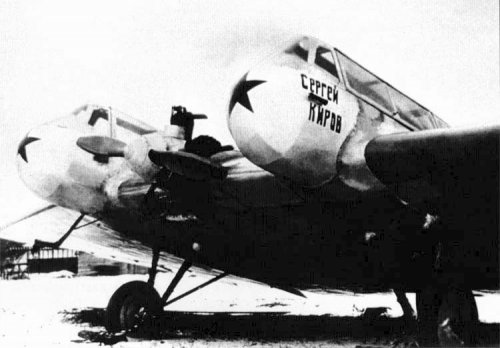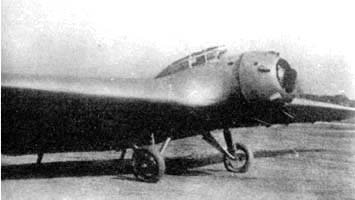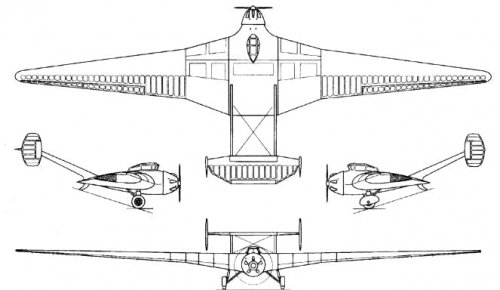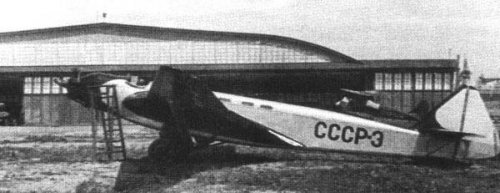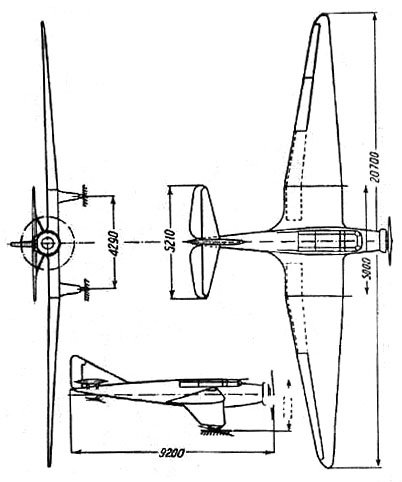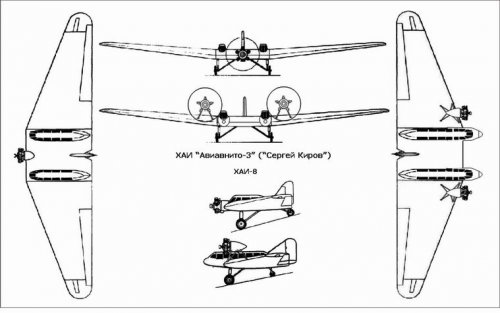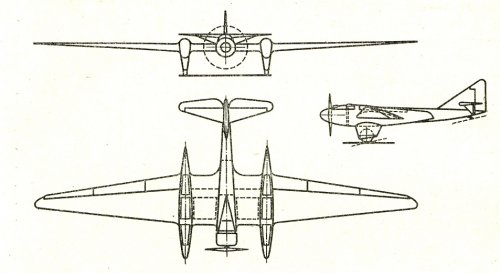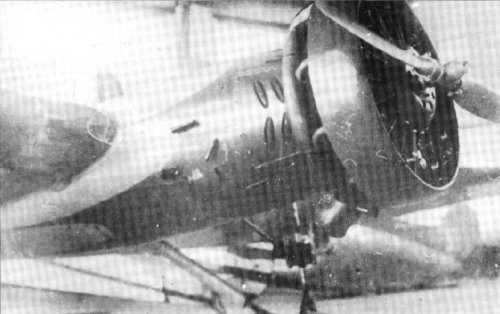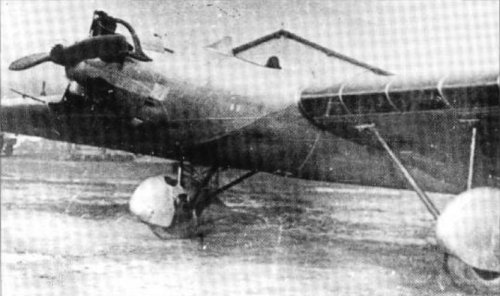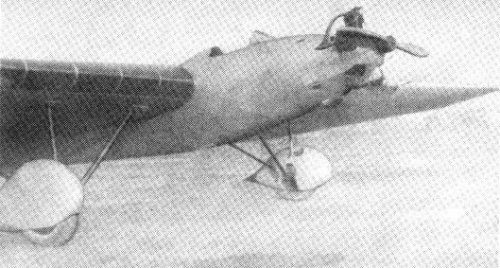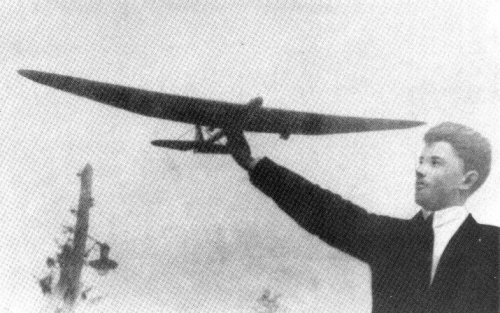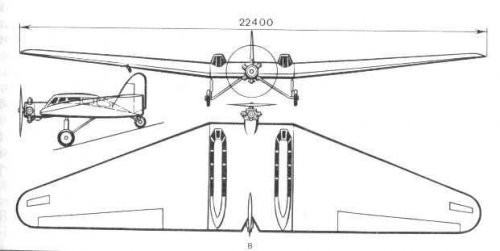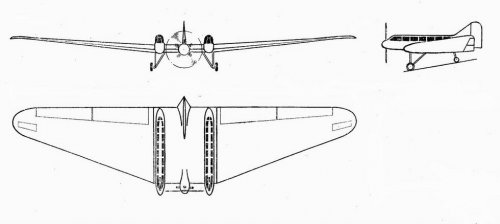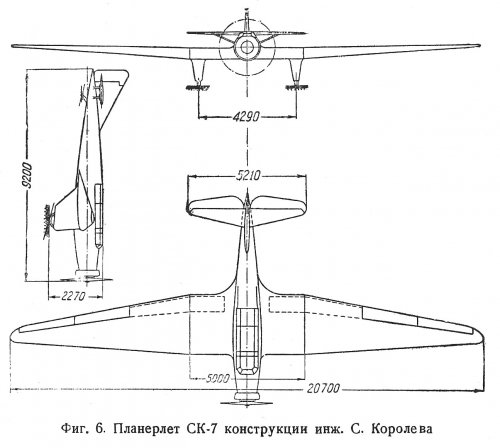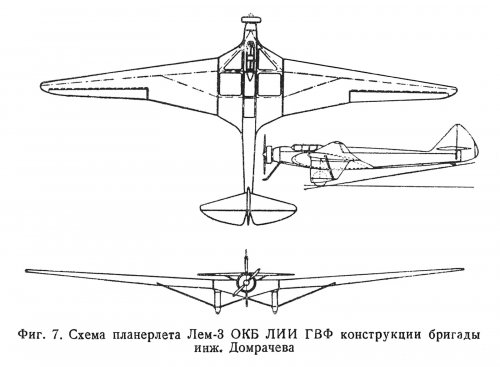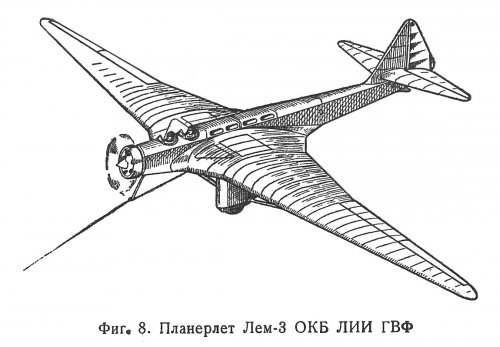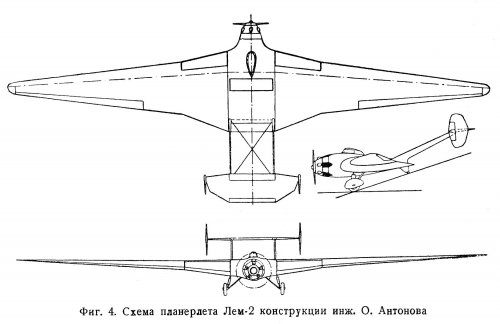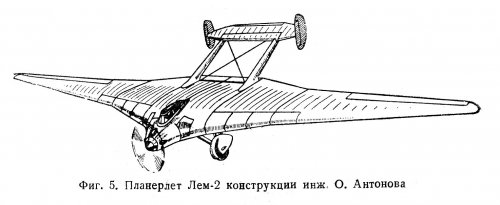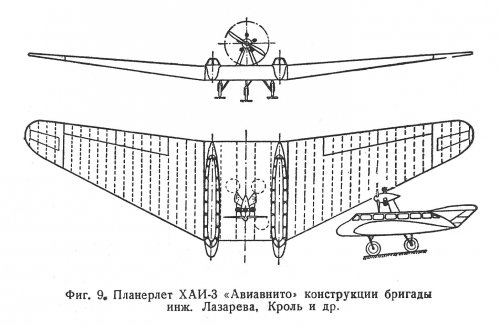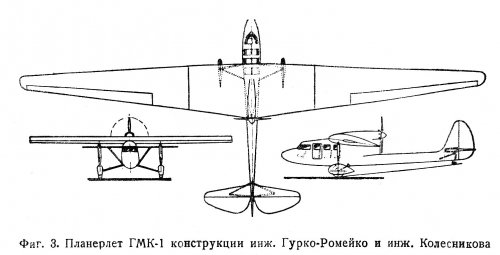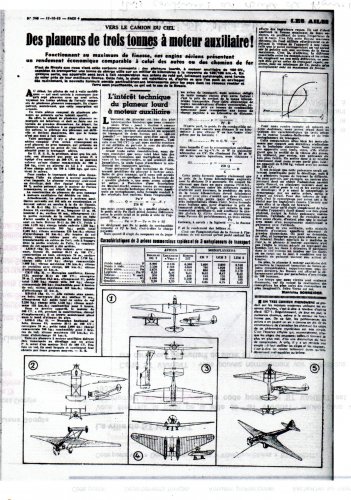Avimimus said:
By powered-glider you mean a glider converted to a powered aircraft (like the Go244)? The alternative would be an aircraft that alternates between powered flight and gliding.
Rather your second guess is right. RMK-1 was so-called
Planerlet (Планерлет), which can be translated as “gliderplane”. This concept and the term itself are inventions of Lev P. Malinovsky, the
Osoaviakhim vice-president and Civil Airfleet (GVF) chief of Scientific & Technical Department. He published his ideas in
Samolet magazine, No.12/1933, under title “New Ways of Gliding”
(Новые пути планеризма). His main idea was that permanent increase of flight speeds conflicts with economical reasons; it isn’t always necessary (sometimes even harmful, as in agricultural aviation) but very expensive (as it requires more and more powerful engines which burn plenty of fuel). Therefore he proposed a new, optimized kind of flying machine combining the best features of a conventional airplane and a glider. As “normal” aircraft, the Planerlet could maneuver independently of thermals; but it would have such “glider” features as: high L/D ratio, low landing speed, limited wing load. Empty Planerlet could takeoff by its own power, but with full payload it could need an assist of towing aircraft.
Malinovsky considered that his “gliderplane” would be much more costeffective in service than classic transport airplane, and their wide introduction would yield large economic benefits. But not all the specialists agreed with him. In 1934-35 there was a discussion about this in “Samolet” magazine: both supporters and opponents of planerlet put their arguments. Among the supporters there were Eng. Viktor Belyaev (later renowned designer of many unconventional aircraft, the best-known of which is DB-LK bomber), Pavel Ivensen, and Sergei Korolev (future “father” of Soviet space program); the main opponents were Eng. Ramm and V. Markin, deputy editor of "Samolet" magazine. As a result, it was decided not to introduce Planerlets widely for a while, but to build some experimental types and test them.
Three types of Planerlets were built and flown; probably the best known of them is Kharkov-built
KhAI-Aviavnito-3 Sergei Kirov flying wing, designed by A. Lazarev and A. Krol. It was first flown at September 23, 1936 (pilot E. Schwarz), and was actually used in 1937-38 on Moscow Oblast regional airlines for cargo and passenger transport (it was the world’s first flying wing really used as transport aircraft!). Two other prototypes even obtained “LEM” designations – for
Lev
Malinovsky. The
LEM-2 (OKA-33) was designed by Oleg Antonov, and became the first powered aircraft by him; its first flight was at April 20, 1937 (pilot N. Fedoseev). Another was Leningrad-built
LEM-3 (LIG-6) designed by Yu. Domrachev and L. Vildgrube; it was also tested in 1937 but crashed during overfly to Moscow. Also there was one military Planerlet – it was powered version of Grokhovsky G-31 assault glider called
G-31A and tested in 1935. Like its motorless prototype, G-31A could carry 16 troops in special sections inside thick wing. All Planerlets were powered by 100-hp M-11 engine.
The construction of two other Planerlet types was beginned but never finished. One of them was 6-seat
SK-7 designed by Sergei Korolev (with assistance of Petr Flerov). And the second was subject of this topic – the
RMK-1. Romeiko-Gurko designed it together with Dmitry Kolesnikov, renowned glider designer (his DK-2 established new Soviet Union record of flight range for gliders at September 20, 1934). So, “R” and “K” letters in the designation are for two designers; “M” is perhaps in honor of Malinovsky?
Unfortunately I don't have RMK-1 pictures now. I attach some pictures of other Planerlets.
Sources:
http://www.airwar.ru/enc/cw1/hai3.html
http://www.airwar.ru/enc/law1/lem2.html
http://www.airwar.ru/enc/cw1/lig6.html
http://www.airwar.ru/enc/glider/g31.html
Krasilschikov A.P. Gliders of USSR. - Moscow, 1990. - P.165-168
Sobolev D.A. 100-year history of Flying Wing. - Moscow, 1998. - P.68-71
Vetrov G.S. S.P.Korolev in aviation: Ideas, Projects, Designs. - Moscow, 1988. - P.70-83
Shavrov V.B. History of aircraft designs in USSR before 1938. - Moscow, 1986 (3rd edition). - P.560-561, 586-590. (
http://eroplan.boom.ru/shavrov/chr10/civil/planer.htm)

